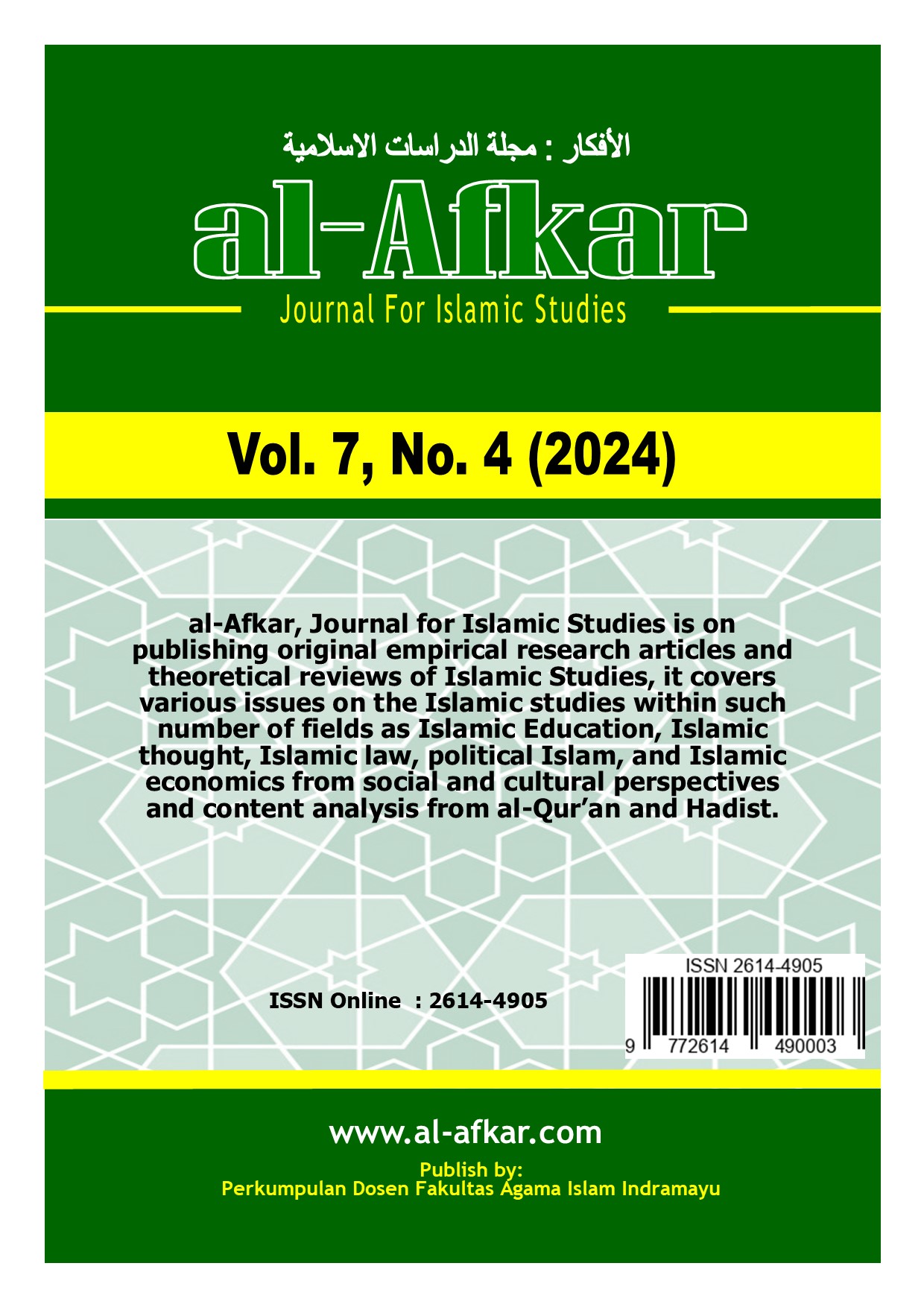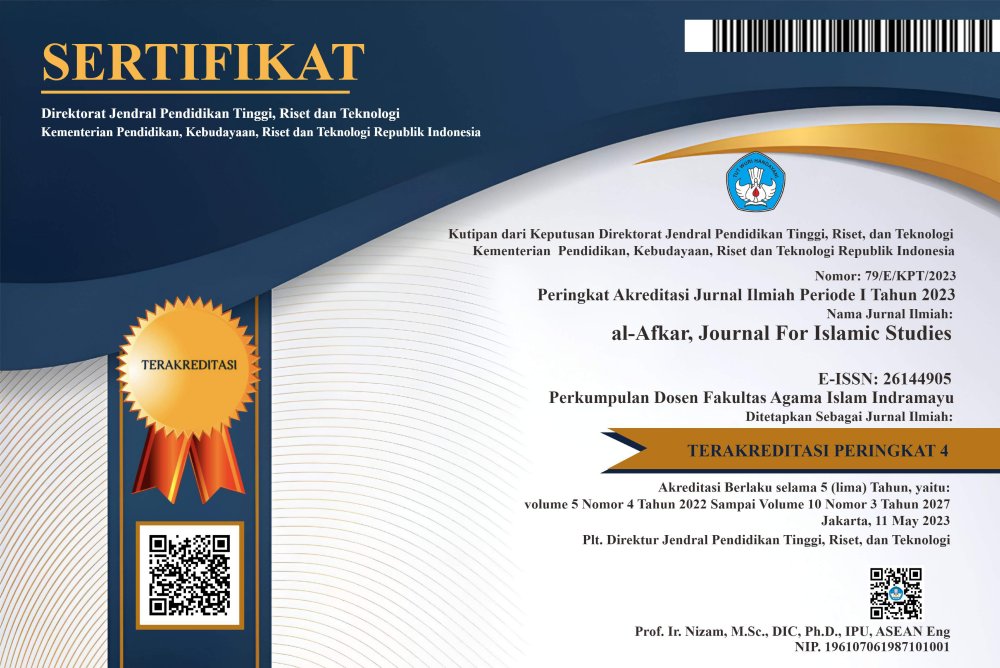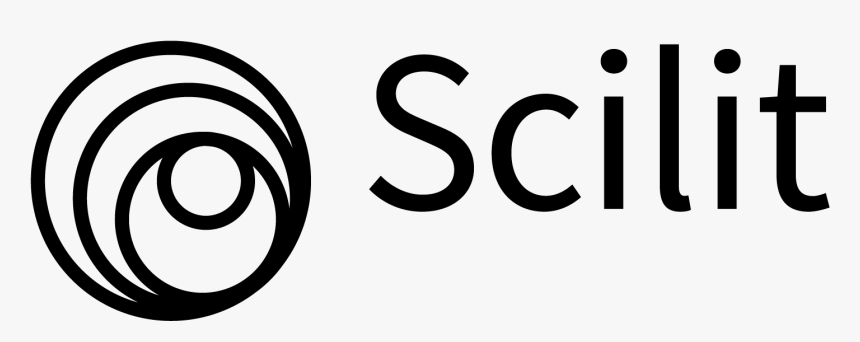Reference Standards for Children's Educational Stages: Educational Level or Age
DOI:
https://doi.org/10.31943/afkarjournal.v7i4.1160Keywords:
Children, Education Stage, Education Standar, Islamic ParentingAbstract
This study aims to uncover errors in determining educational standard references for children, which have an impact on the damage to youth due to parenting delay and education. The subjects of this study were parents who have 0-15 years old children, and the community of Karangjati, Ngabeyan, Klaten in general. This study used a qualitative descriptive approach. Data were collected using interview, observation and documentation methods. While data analysis techniques are used to describe research results in a structured way, data collection, reduction, presentation, and provide conclusions. Based on research that has been conducted in Karangjati, many parents are found to be mistaken in using reference standards in educating their children. Instead of using age, as the Prophet ﷺ exemplified, parents often judge children based on their level of education, elementary school means young children, junior high school means they are just entering adolescence, and high school is adult. In Islamic education, the age of 7 is the age when children have begun to be taught to carry out obligations, and at the age of 10, parents are allowed to give punishment if they still neglect it. Meanwhile, the age of 7-10 is the age of elementary school (SD), while parents still consider children who are in elementary school as young children who are still not worth yet to be given obligations and responsibilities, so that the stage of education for children is delayed. This delay in education has an impact on many 10 years old children and over who are still incapable to carry out obligations properly, their bodies are adults, but mindset like children. To achieve the ideal educational goals according to Islam, restoring the reference standards of education as exemplified by the Prophet ﷺ is the responsibility of parents as well as experts involved in the world of education.
Downloads
References
A. Imron, “KONTRIBUSI HUKUM ISLLAM TERHADAP PEMBANGUNAN HUKUM NASIONAL (Studi Tentang Konsepsi Taklif dan Mas’uliyat dalam Lagislasi Hukum),” Universitas Diponegoro, Semarang, 2008.
A. Jawawi, “Hadits Perintah Shalat Pada Anak Pada Usia 7 - 10 Tahun dalam Perspektif Ilmu Perkembangan,” An Nisa’, vol. 13, no. 1, 2020.
A. R. Khakim and Nurul Hidayah, “Tahapan Mendidik Anak Menurut Ali bin Abi Thalib dan Relevansinya di Era Modern,” Journal of Education and Management Studies, vol. 5, no. 2, pp. 14–21, Apr. 2022.
Bilher Hutahaean, “Penerapan Sanksi Pidana Bagi Pelaku Tindak Pidana Anak,” Jurnal Yudisial, vol. 6, no. 1, Apr. 2013.
B. M. Miles and A. Muchael Huberman, Analisis Data Kualitatif: Buku Sumber Tentang Metode-metode Baru. Jakarta: UIP, 1992.
J. Brophy, “Primary School Education,” International Encyclopedia of the Social & Behavioral Science. pp. 12014–12017, 2001.
J. Piaget, Piaget’s theory, 4th ed., vol. 1. New York: Wiley, 1983.
L. J. Moleong, Metodologi Penelitian Kualitatif. Bandung: PT. Remaja Rosdakarya, 2018.
M. A. Zahrah, Ushul Fiqh. Beirut: Daar al Fikr.
M. G. Spurio, “Words that heal,” Psychiatr Danub, no. 27 Suppl 1, S21-7 ., Sep. 2015.
M. Shobahiya, Waston, and Muthoifin, “Problems of Human Civilization and Islamic Education as Alternative Solution,” International Journal of Social Science and Human Resources, vol. 06, no. 01, Jan. 2023.
Ubadah, “Peradaban Islam di Spanyol dan Pengaruhnya Terhadap Peradaban Barat,” Jurnah Hunafa, vol. 5, no. 2, Aug. 2008.
Downloads
Published
How to Cite
Issue
Section
License
Copyright (c) 2024 Qo’idul A’dzham, Triono Ali Mustofa, Mahasri Shobahiya

This work is licensed under a Creative Commons Attribution 4.0 International License.



















